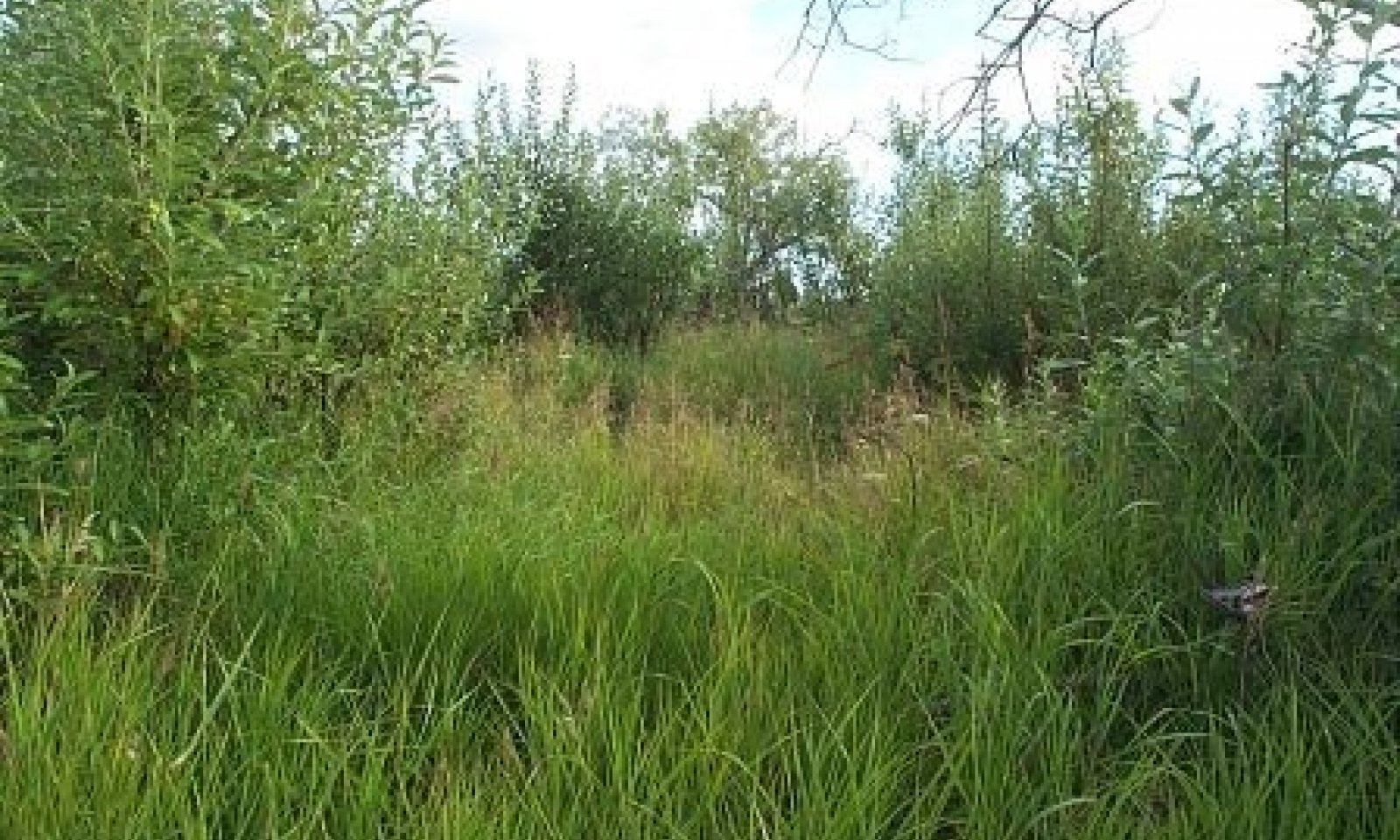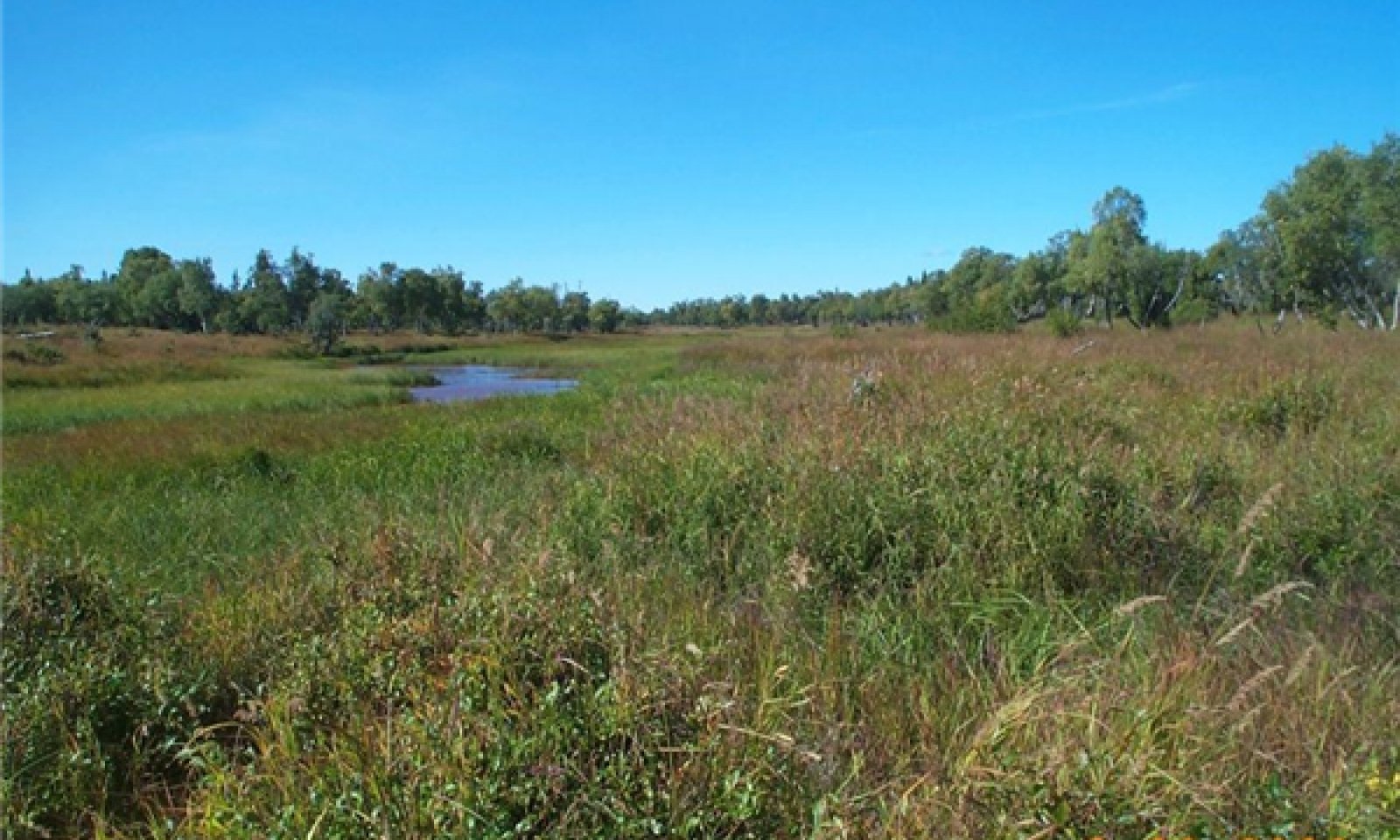
Boreal Scrubland Sandy Flood Plains
Scenario model
Current ecosystem state
Select a state
Management practices/drivers
Select a transition or restoration pathway
-
Transition T1A
Beaver activity.
More details -
Restoration pathway R2A
Dam removal
More details -
No transition or restoration pathway between the selected states has been described
Target ecosystem state
Select a state
State 1
Reference State







Description
The reference state supports three community phases, which are grouped by the structure and dominance of the vegetation (e.g., graminoids, shrubs, and forbs) and by their ecological function and stability. The presence of these communities is temporally dictated by the occasional periods of flooding. The reference community phase is represented by open scrubland that has graminoids and forbs throughout. A transition to an alternate state is caused by the damming of a nearby waterway by beavers (Castor canadensis).
Submodel
State 2
Beaver-Affected Areas



Description
This alternate state results from ponding near beaver dams. Beavers (Castor canadensis) directly kill trees and large shrubs for food and dam construction, and they also indirectly kill these species and others by causing a rise in the water table (USDA–FS, 2013). Ponding of the site results in a plant community different from that normally on these flood plains. This alternate plant community commonly includes resilient individuals and extant species in the reference community phase as well as pioneer hydrophilic species. The permanent ponding associated with areas upstream from beaver dams can negate the influence of flooding on the soils and vegetation. The plant community likely will remain relatively stable until the dam is removed. When the dam is removed by natural blowout, abandonment by beaver, or human intervention, the plant community likely will revert back to the reference state. Further research is needed to quantify this process in situ.
Browsing of willow by moose may be severe. This may maintain the open scrubland by preventing willows from becoming dominant in the community.
Submodel
Mechanism
Beaver ponds raise the upstream water table and increase ponding length and depth in affected areas. Flooding is less likely to be disruptive to the vegetation.
Constraints to recovery
It is currently unknown whether the removal of a beaver population and the associated network of dams will restore an drainage to the reference state.
Mechanism
It is unknown if the alternate state will naturally return to the reference states natural upon removal of a beaver dam. Various factors, such as site hydrology, extant species, propagule pressure, will influence the restoration pathway. Further research and in situ documentation is needed to fully describe this transition.
Model keys
Briefcase
Add ecological sites and Major Land Resource Areas to your briefcase by clicking on the briefcase (![]() ) icon wherever it occurs. Drag and drop items to reorder. Cookies are used to store briefcase items between browsing sessions. Because of this, the number of items that can be added to your briefcase is limited, and briefcase items added on one device and browser cannot be accessed from another device or browser. Users who do not wish to place cookies on their devices should not use the briefcase tool. Briefcase cookies serve no other purpose than described here and are deleted whenever browsing history is cleared.
) icon wherever it occurs. Drag and drop items to reorder. Cookies are used to store briefcase items between browsing sessions. Because of this, the number of items that can be added to your briefcase is limited, and briefcase items added on one device and browser cannot be accessed from another device or browser. Users who do not wish to place cookies on their devices should not use the briefcase tool. Briefcase cookies serve no other purpose than described here and are deleted whenever browsing history is cleared.
Ecological sites
Major Land Resource Areas
The Ecosystem Dynamics Interpretive Tool is an information system framework developed by the USDA-ARS Jornada Experimental Range, USDA Natural Resources Conservation Service, and New Mexico State University.

